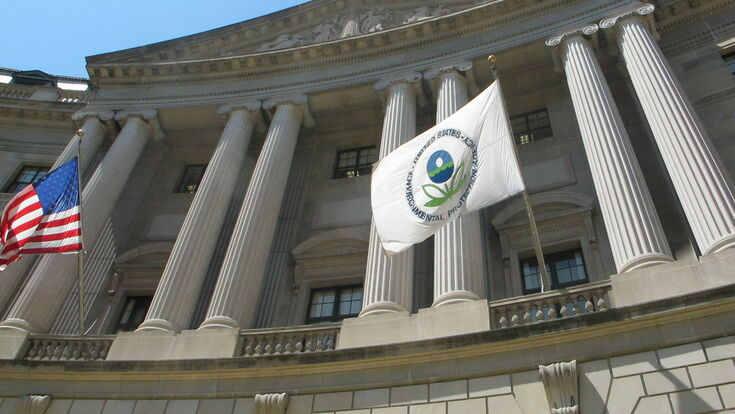EPA announces Federal Enforcement Priorities to protect communities from pollution : EPA enforcement priorities also focus on PFAS and landfill emissions

The U.S. Environmental Protection Agency (EPA) recently announced its National Enforcement and Compliance Initiatives for 2024-2027, including for the first time initiatives to combat climate change, address exposure to PFAS contamination, and protect communities from cancer-causing coal ash.
Every four years, EPA selects enforcement and compliance priorities across administrations so that the Agency and its state partners can prioritise resources to address the most serious and widespread environmental problems facing the US. In addition to the climate change, PFAS, and coal ash initiatives, EPA is modifying its Clean Air Act initiative to focus on hazardous toxic air pollution in overburdened communities in each EPA region, and continuing its drinking water and chemical accident prevention initiatives begun under previous administrations.
“EPA’s new national initiatives address urgent 21st century environmental problems, while upholding the rule of law to level the playing field for law-abiding companies and promoting a sustainable future for our children and grandchildren,” said EPA Assistant Administrator for Enforcement and Compliance Assurance David M. Uhlmann. “Working closely with our state partners, EPA enforcement efforts will mitigate climate change and limit exposure to the scourge of PFAS contamination, while addressing the reality that, for too long in the United States, the worst effects of pollution have plagued overburdened communities.”
The 2024-2027 National Enforcement and Compliance Initiatives are:
Mitigating climate change
Tackling the climate crisis is an urgent priority. EPA will use its enforcement and compliance tools to reduce greenhouse gas emissions and help limit the worst consequences of climate change. The initiative will focus on three separate and significant contributors to climate change:
- methane emissions from oil and gas facilities;
- methane emissions from landfills; and
- the use, importation, and production of hydrofluorocarbons (HFCs).
EPA has identified widespread noncompliance in all three areas, resulting in potentially tens of thousands of tonnes of illegal emissions of greenhouse gases and other pollutants. This initiative will help meet EPA's climate change goals while addressing significant noncompliance in certain industries.
Addressing PFAS exposure
Per- and polyfluoroalkyl substances (PFAS) are toxic, persistent "forever chemicals" that have caused widespread contamination of our air, water, and land across the country. This initiative will focus on implementing EPA's PFAS Strategic Roadmap and holding accountable those who manufactured and/or used PFAS in the manufacturing process, federal facilities that released PFAS, and other industrial parties that significantly contributed to the release of PFAS into the environment. Making sure these entities properly identify and characterise contamination, control ongoing releases, and comply with existing and future environmental requirements will help address this larger environmental threat.
Protecting Communities from Coal Ash Contamination
This initiative will focus on the threat posed by the hundreds of millions of pounds of coal ash, also known as coal combustion residuals (CCR), found across our country in on-site landfills, settling ponds and other surface impoundments at coal-fired power plants. Coal ash, a waste product from burning coal for energy, contains contaminants such as mercury, cadmium, chromium and arsenic, which are linked to cancer and other serious health effects. This initiative will focus on the approximately 300 facilities nationwide that collectively are responsible for approximately 775 coal ash impoundments. Neighbourhoods close to these facilities are often environmental justice communities.
Reducing Air Toxics in Overburdened Communities
This initiative will tackle the serious threat to communities from illicit exposure to regulated hazardous air pollutants (HAPs) from nearby industry. Many of these pollutants, such as benzene, ethylene oxide and formaldehyde, are known or suspected to cause cancer or other serious neurological, reproductive, developmental and respiratory health effects when inhaled or ingested through the food chain, including harm to children. This initiative will seek to target, investigate and address non-compliance with clean air standards designed to protect public health, focusing on sources of HAPs in communities that are already highly exposed to the effects of pollution.
Improving compliance with drinking water standards
This is an effort to ensure compliance with the Safe Drinking Water Act (SDWA) by the approximately 50,000 regulated drinking water systems that provide water to residents year-round, known as community water systems (CWSs). Each year, thousands of CWSs continue to violate one or more drinking water standards, exposing millions of people to potential health risks. Over the next four years, EPA will increase its field presence, use strong enforcement to improve compliance, and provide more compliance assistance to prevent and address public health risks.
Chemical Accident Risk Reduction
This initiative aims to reduce the likelihood of catastrophic chemical releases and address the problem of preventable chemical accidents that continue to occur across the country. Thousands of facilities across the country manufacture, use and store extremely hazardous substances. Catastrophic fires, leaks, and explosions at these facilities can result in deaths and serious injuries, evacuations, shelter-in-place orders, toxic exposures, and other harm to workers, first responders, and neighbouring communities. EPA has found significant noncompliance among companies that handle extremely hazardous substances and will target companies that fail to meet risk management requirements designed to protect public health and safety from extremely hazardous chemical releases.
